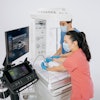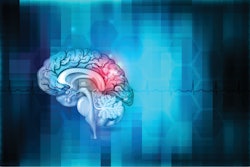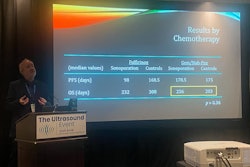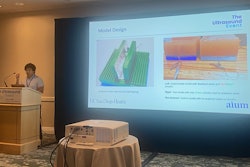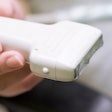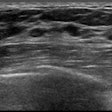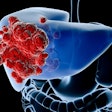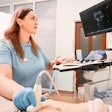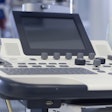ORLANDO – Ultrasound’s use in the therapeutic space is rising and may provide key advantages over current standards of care for neuropathologies.
That was the take-home message from a keynote presentation given at the American Institute of Ultrasound in Medicine (AIUM) annual meeting on March 31 by Ali Rezai, MD, from West Virginia University. Rezai, who is leading efforts in this area, discussed current and potential applications of therapeutic soundwaves in medicine. He also shared examples of studies showing the efficacy of these treatments.
 Ali Rezai, MD, gives a keynote speech at AIUM 2025, highlighting the growing promise that therapeutic ultrasound presents for treating brain diseases and conditions such as Alzheimer's disease, Parkinson's disease, and addiction.AIUM
Ali Rezai, MD, gives a keynote speech at AIUM 2025, highlighting the growing promise that therapeutic ultrasound presents for treating brain diseases and conditions such as Alzheimer's disease, Parkinson's disease, and addiction.AIUM
“In about 10 years, there’s going to be rapid growth and about half of the room … will be therapeutics people,” Rezai said to keynote attendees.
Therapeutic ultrasound has emerged in recent years as a promising method for treating brain diseases and conditions, such as Alzheimer's disease, Parkinson’s disease, and addiction.
High-intensity focused ultrasound (HIFU) has a frequency range of 20 kHz to 200 MHz and has implications for several conditions such as tremor, Parkinson’s, and epilepsy, among others. On an MRI table, patients wear a helmet that has about 1,000 ultrasound probes. The probes send sound waves into the brain to target neurons directly involved with the disease. The procedure can be completed within two hours, with patients able to go home the same day.
Rezai showed examples of how Parkinson’s disease patients have their severe tremors mitigated, allowing them to regain control of their motions. He and colleagues at the Rockefeller Neuroscience Institute, where Rezai serves as executive chair and director, perform these treatments on Parkinson’s patients.
“We did three [procedures] last week. We’re doing five this week,” Rezai said.
Ali Rezai, MD, explains the various advantages that therapeutic ultrasound has in treating neurodegenerative diseases.
Low-intensity focused ultrasound (LIFU) meanwhile has a frequency of below 20 kHz. It has shown the potential for more effective drug delivery by temporarily opening the blood-brain barrier. This barrier keeps germs and toxins out of the brain. However, this also means that drugs meant to treat brain diseases face this barrier. LIFU’s ability to open the blood-brain barrier can also make way for liquid biopsy and biomarker analysis.
For Alzheimer’s disease, LIFU has shown the potential to reduce amyloid plaques seen in patients’ brains. Rezai was also part of a study that showed simply opening the blood-brain barrier leads to a 5% reduction on average in amyloid plaque.
Rezai also led a proof-of-concept trial published in 2024, which demonstrated that combining aducanumab infusion therapy with regional-focused ultrasound to open the blood-brain barrier in early-stage Alzheimer’s disease patients led to few adverse events and a greater reduction in the level of amyloid plaque than aducanumab therapy alone.
“We’re in desperate need for therapeutic strategies because people are living longer,” Rezai said. “We need to stay ahead of the Alzheimer's curse that’s occurring rapidly. The numbers are growing.”
Rezai talks about his optimism about AIUM 2025 and the opportunity to network more about advanced ultrasound techniques in the therapeutic space.
Neuromodulation is another technique where focused ultrasound waves like from LIFU are sent into parts of the brain to modify behavior and reduce cravings for patients addicted to drugs or alcohol. These waves address chemical and electrical imbalances in the brain caused by addiction to drugs or behavioral addictions like gambling.
“Even with the best medication treatment and 28-day residential program, less than 50% [of cases] are successful,” Rezai said. “We need to provide better solutions.”
A 2023 study of four substance use disorder patients that Rezai was a part of found that LIFU targeting the nucleus accumbens was safe and acutely reduced substance craving during the procedure. The researchers highlighted that this potentially had a longer-term impact on craving reductions.
Rezai said that therapeutic ultrasound has attracted and will continue to attract professionals in multiple fields, including neurosurgeons, psychiatrists, engineers, and computer scientists, among others.
“It’s an exciting time and the society [AIUM] is really on the cutting edge of connecting all the teams,” he said.



